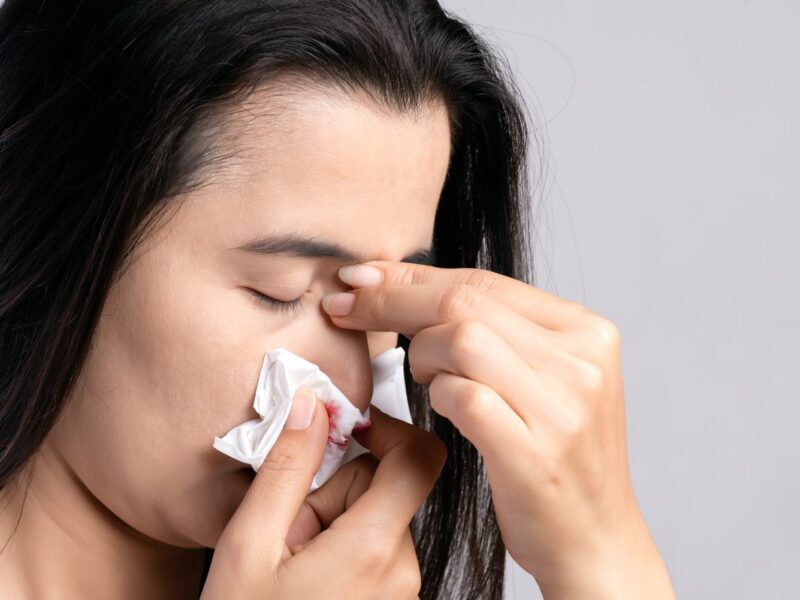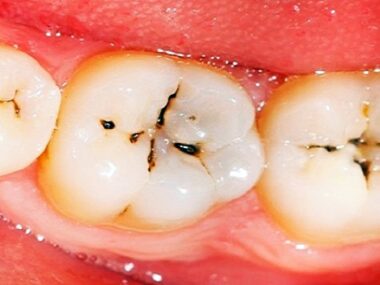Nosebleeds, medically known as epistaxis, are commonly characterised by bleeding from the blood vessels lining the nasal cavity. While often not serious, nosebleeds can be alarming and may result from various factors, including environmental conditions, underlying health issues, or trauma.
This essay aims to provide a comprehensive overview of nosebleeds, exploring their causes, prevention strategies, and appropriate first-aid measures to manage them effectively.
Causes of Nosebleeds

Nosebleeds can occur for several reasons, ranging from minor irritations to more serious underlying conditions. Common causes include:
- Dry Air: Dry climates, heated indoor air, or low humidity levels can dry out the nasal membranes, making them more susceptible to bleeding.
- Nasal Trauma: Injury to the nose from blows, falls, or accidents can cause blood vessels to rupture, leading to nosebleeds.
- Nasal Irritation: Irritants such as pollutants, smoke, dust, or strong odours can irritate the nasal passages, resulting in bleeding.
- Nose-Picking: Habitual picking or scratching of the inside of the nose can damage delicate blood vessels and trigger nosebleeds.
- Nasal Infections: Infections such as colds, sinusitis, or allergies can cause inflammation and swelling of the nasal mucosa, increasing the risk of nosebleeds.
- Medical Conditions: Underlying medical conditions such as high blood pressure, blood clotting disorders, or nasal tumours may predispose individuals to recurrent nosebleeds.
Prevention of Nosebleeds
While nosebleeds are often unpredictable, certain preventive measures can help reduce their frequency and severity. These include:
- Humidification: Using a humidifier to add moisture to the air can help prevent nasal dryness and reduce the risk of nosebleeds, especially during dry or cold weather.
- Nasal Saline Sprays: Regular use of saline nasal sprays or rinses can help keep the nasal passages moist and prevent irritation.
- Avoiding Nasal Trauma: Taking precautions to avoid nasal injuries, such as wearing protective gear during sports activities or being cautious in crowded environments, can help prevent nosebleeds.
- Nasal Lubrication: Applying a thin layer of petroleum jelly or saline gel inside the nostrils can help lubricate the nasal passages and prevent dryness.
- Avoiding Nasal Irritants: Minimizing exposure to irritants such as smoke, pollutants, or strong odours can help reduce the risk of nosebleeds.
- Nosebleed-Preventive Measures: For individuals prone to recurrent nosebleeds, especially due to underlying medical conditions, consulting a healthcare professional for personalised preventive measures is advisable.
First Aid for Nosebleeds
In the event of a nosebleed, prompt and appropriate first aid measures can help control the bleeding and prevent complications. Here’s what to do:
- Stay Calm: Encourage the affected individual to stay calm and sit upright, leaning slightly forward to prevent blood from flowing down the throat.
- Pinch the Nose: Using the thumb and index finger, pinch the soft part of the nose (just above the nostrils) firmly for 10-15 minutes, applying constant pressure. This helps compress the blood vessels and stop the bleeding.
- Avoid Tilting Back: Contrary to popular belief, tilting the head back can cause blood to flow down the throat, potentially causing choking or vomiting. It’s essential to lean forward to prevent swallowing blood.
- Apply Ice Packs: Placing a cold compress or ice pack wrapped in a cloth on the bridge of the nose can help constrict blood vessels and reduce bleeding.
- Moisturize the Nasal Passages: After the bleeding stops, apply a small amount of petroleum jelly or saline gel inside the nostrils to prevent further dryness and irritation.
- Seek Medical Attention: If the nosebleed persists for more than 20-30 minutes despite first aid measures, or if it’s accompanied by other concerning symptoms such as dizziness, fainting, or difficulty breathing, seek immediate medical attention.
Conclusion
In conclusion, nosebleeds, or epistaxis, are a common occurrence that can occur due to various factors, including dry air, nasal trauma, or underlying medical conditions. While often not serious, nosebleeds can cause anxiety and discomfort, necessitating prompt first-aid measures to control bleeding and prevent complications.
By understanding the causes of nosebleeds and adopting preventive strategies such as humidification, nasal lubrication, and avoidance of nasal irritants, individuals can reduce their risk of experiencing nosebleeds.
In the event of a nosebleed, knowing how to administer appropriate first aid measures, including pinching the nose, applying ice packs, and seeking medical attention if necessary, is essential for effective management.Overall, with proper awareness, preventive measures, and first aid interventions, individuals can manage nosebleeds effectively and minimize their impact on daily life.
Related Tags
Taiwo Olawuyi
Taiwo Olawuyi is a highly dedicated and passionate professional blogger, renowned for her ability to create captivating, informative, and engaging content in the realm of health and wellness. She holds a Bachelor's degree in Political Science from Olabisi Onabanjo University and a Master's degree in Adult Education from the prestigious University of Ibadan. Her profound passion for health and wellness, coupled with her unwavering dedication to her audience, serves as a constant source of inspiration and enlightenment for readers worldwide.










